Funktionelle Materialien
Prof. Peter Müller-Buschbaum
Forschungsgebiet
We examine the physical fundamentals of material properties using scattering methods (neutrons-, x-ray and dynamic light scattering). The general goal of our research is to judge from the knowledge of the microscopic dynamics and structure for explaining the functional characteristics of condensed matter.
Adresse/Kontakt
James-Franck-Str. 1/I
85748 Garching b. München
+49 89 289 12452
Fax: +49 89 289 12473
Mitarbeiterinnen und Mitarbeiter der Arbeitsgruppe
Professor
| Photo | Akad. Grad | Vorname | Nachname | Raum | Telefon | |
|---|---|---|---|---|---|---|
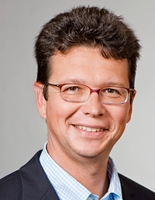
|
Prof. Dr. | Peter | Müller-Buschbaum | 278 | +49 89 289-12451 |
Sekretariat
| Photo | Akad. Grad | Vorname | Nachname | Raum | Telefon | |
|---|---|---|---|---|---|---|

|
Carola | Kappauf | – | +49 89 289-14627 | ||

|
Marion | Waletzki | 282 | +49 89 289-12452 |
Wissenschaftlerinnen und Wissenschaftler
| Photo | Akad. Grad | Vorname | Nachname | Raum | Telefon | |
|---|---|---|---|---|---|---|

|
M.Sc. | Fabian | Apfelbeck | – | +49 89 289-12462 | |

|
M.Sc. | Yusuf | Bulut | – | – | |

|
M.Sc. | Christopher | Everett | – | +49 89 289-12454 | |

|
M.Sc. | Marc | Gensch | – | – | |

|
M.Sc. | Tianfu | Guan | – | +49 89 289-12449 | |

|
M.Sc. | Renjun | Guo | – | – | |

|
M.Sc. | Constantin | Harder | – | – | |

|
M.Sc. | Julian | Heger | – | +49 89 289-12455 | |
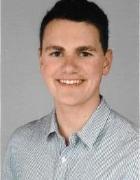
|
M.Sc. | Tobias | Hölderle | – | +49 89 289-14758 | |

|
M.Sc. | Linus | Huber | – | +49 89 289-12461 | |

|
M.Sc. | Xinyu | Jiang | – | +49 89 289-12455 | |

|
M.Sc. | Xiongzhuo | Jiang | – | +49 89 289-12457 | |

|
Dr. | Volker | Körstgens | 287 | +49 89 289-12456 | |

|
M.Sc. | Morgan | Le Dü | – | +49 89 289-12457 | |

|
M.Sc. | Nian | Li | – | +49 89 289-12449 | |

|
M.Eng. | Yanan | Li | – | +49 89 289-12449 | |
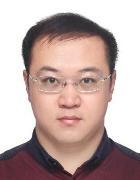
|
M.Sc. | Zerui | Li | – | +49 89 289-12461 | |
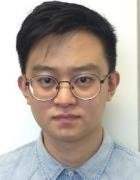
|
M.Sc. | Suzhe | Liang | – | +49 89 289-12454 | |

|
M.Sc. | Yuxin | Liang | – | +49 89 289-12462 | |

|
M.Sc. | Anna-Lena | Oechsle | – | +49 89 289-12450 | |

|
M.Sc. | Guangjiu | Pan | – | +49 89 289-12462 | |

|
M.Sc. | Dominik | Petz | – | – | |

|
M.Sc. | Thien An | Pham | – | – | |

|
M.Sc. | Ivana | Pivarnikova | – | – | |
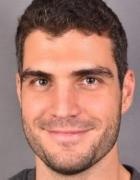
|
M.Sc. | Lennart | Reb | – | +49 89 289-12455 | |

|
M.Sc. | Julija | Reitenbach | – | +49 89 289-12462 | |

|
M.Sc. | Manuel | Reus | 755 | +49 89 289-12450 | |

|
Prof. Dr. | Walter | Schirmacher | – | +49 6131 39-24214 | |

|
M.Sc. | Dominik | Schwaiger | – | +49 89 289-12453 | |
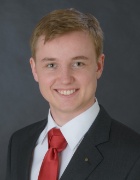
|
M.Sc. | Lukas | Spanier | – | +49 89 289-12462 | |

|
M.Sc. | Kun | Sun | – | +49 89 289-12462 | |

|
M.Eng. | Ting | Tian | – | +49 89 289-12453 | |
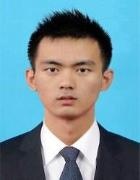
|
M.Eng. | Suo | Tu | – | +49 89 289-12450 | |

|
Dr. | Apostolos | Vagias | – | – | |

|
M.Eng. | Peixi | Wang | – | +49 89 289-12474 | |

|
M.Sc. | Christian | Weindl | – | +49 89 289-12474 | |

|
M.Sc. | Tianxiao | Xiao | – | +49 89 289-12449 | |
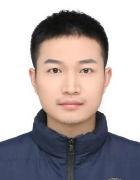
|
Zhuijun | Xu | – | +49 89 289-12457 | ||

|
M.Sc. | Yingying | Yan | – | +49 89 289-12457 | |
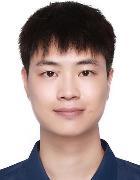
|
M.Sc. | Jinsheng | Zhang | – | +49 89 289-12457 | |

|
M.Sc. | Tianle | Zheng | – | +49 89 289-12461 | |

|
M.Sc. | Huaying | Zhong | – | +49 89 289-12462 | |

|
M.Sc. | Yuqin | Zou | – | +49 89 289-12454 |
Studierende
| Photo | Akad. Grad | Vorname | Nachname | Raum | Telefon | |
|---|---|---|---|---|---|---|

|
B.Sc. | Emanuel | Anwander | – | +49 89 289-12457 | |

|
B.Sc. | Thomas | Baier | – | +49 89 289-12461 | |

|
B.Sc. | Debamitra | Chakraborty | – | – | |

|
B.Sc. | Sebastian | Coen | – | +49 89 289-12457 | |

|
Jasper | Ebel | – | +49 89 289-12457 | ||

|
B.Sc. | Gokay | Erbil | – | +49 89 289-12457 | |

|
Felix | Herschmann | – | – | ||

|
B.Sc. | David Paul | Kosbahn | – | +49 89 289-12457 | |

|
B.Sc. | Ahmed | Krifa | – | +49 89 289-12457 | |

|
B.Sc. | Christoph | Lindenmeir | – | +49 89 289-12457 | |

|
Augustin | Lösch | – | – | ||

|
B.Sc. | Hsu Thazin | Myint | – | +49 89 289-12457 | |

|
Simon | Schiedeck | – | – | ||

|
B.Sc. | Tobias | Schöner | – | +49 89 289-12457 | |

|
Henry | Stock | – | – | ||
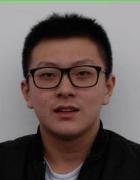
|
B.Sc. | Kexin | Wu | – | – |
Andere Mitarbeiterinnen und Mitarbeiter
| Photo | Akad. Grad | Vorname | Nachname | Raum | Telefon | |
|---|---|---|---|---|---|---|

|
Reinhold | Funer | 721 | +49 89 289-12496 | ||

|
Josef | Kaplonski | 231 | +49 89 289-12467 | ||

|
Prof. Dr. | Winfried | Petry | – | +49 89 289-54704 | |

|
M.Sc. | Simon Jakob | Schaper | – | – | |

|
M.Sc. | Tobias | Widmann | – | – | |

|
M.Eng. | Shanshan | Yin | – | +49 89 289-12455 |
Lehrangebot der Arbeitsgruppe
Lehrveranstaltungen mit Beteiligung der Arbeitsgruppe
Abgeschlossene und laufende Abschlussarbeiten an der Arbeitsgruppe
- Calculation of KERMA Coefficients for JEFF 3.3 Library with NJOY and Sensitivity Analysis using Collision History for the FRM II
- Abschlussarbeit im Masterstudiengang Physics (Applied and Engineering Physics)
- Themensteller(in): Winfried Petry
- Impact of Light and Heat Induced Degradation on Photoluminescence in Quasi-2D Mixed Halide Perovskites: A Comparison of Ruddlesden-Popper and Dion-Jacobson Type Perovskites
- Abschlussarbeit im Bachelorstudiengang Physik
- Themensteller(in): Peter Müller-Buschbaum
- The Study of N-Type PbS Colloidal Quantum Dots towards Printed Quantum Dot Solar Cells
- Abschlussarbeit im Masterstudiengang Physics (Applied and Engineering Physics)
- Themensteller(in): Peter Müller-Buschbaum
- Effect of gas-phase ethanol adsorption on bilayer structure
- Abschlussarbeit im Bachelorstudiengang Physik
- Themensteller(in): Peter Müller-Buschbaum
- Co-solvent effects on the photovoltaic performance of printed organic solar cells
- Abschlussarbeit im Bachelorstudiengang Physik
- Themensteller(in): Peter Müller-Buschbaum
- Agar-based electrolytes for aqueous zinc-ion batteries
- Abschlussarbeit im Bachelorstudiengang Physik
- Themensteller(in): Peter Müller-Buschbaum
- Development of PEO/PVP/LiTFSI Polymer Electrolyte Batteries for Medical Implants
- Abschlussarbeit im Masterstudiengang Physics (Applied and Engineering Physics)
- Themensteller(in): Peter Müller-Buschbaum
- Environmentally Friendly Double Perovskite Solar Cells
- Abschlussarbeit im Bachelorstudiengang Physik
- Themensteller(in): Peter Müller-Buschbaum
- Humidity-Controlled Phase Behavior of phospholipids via Grazing Incident Small Angle X-ray Scattering
- Abschlussarbeit im Bachelorstudiengang Physik
- Themensteller(in): Peter Müller-Buschbaum
- Composite Electrolyte with Succinonitrile Plasticizer for High-Voltage Lithium Metal Batteries
- Abschlussarbeit im Bachelorstudiengang Physik
- Themensteller(in): Peter Müller-Buschbaum
- Leaf cuticular structure of Crassula species and water transport
- Abschlussarbeit im Bachelorstudiengang Physik
- Themensteller(in): Peter Müller-Buschbaum
- Replication of solar irradiation for the extension of the emulated borehole heat exchanger with artificially generated environmental influences
- Abschlussarbeit im Bachelorstudiengang Physik
- Themensteller(in): Peter Müller-Buschbaum
- Optimization of electrode structures for oxide Li-Metal solid state batteries
- Abschlussarbeit im Masterstudiengang Physics (Applied and Engineering Physics)
- Themensteller(in): Peter Müller-Buschbaum
- Optische Verfahren zur In-Situ Analyse von Perowskitschichten
- Abschlussarbeit im Bachelorstudiengang Physik
- Themensteller(in): Peter Müller-Buschbaum
- Organic Solar Cells for Space Application: Impact of Mechanical Stress and Methods for Enhanced Performance
- Abschlussarbeit im Masterstudiengang Physics (Applied and Engineering Physics)
- Themensteller(in): Peter Müller-Buschbaum
- Perowskit-Solarzellen für die Anwendung im Weltraum
- Abschlussarbeit im Bachelorstudiengang Physik
- Themensteller(in): Peter Müller-Buschbaum
- Development of a multi-purpose in-core irradiation device for the McMaster Nuclear Reactor
- Abschlussarbeit im Masterstudiengang Physics (Applied and Engineering Physics)
- Themensteller(in): Winfried Petry
- Protein-based biohybrid composites for aqueous zinc-ion batteries
- Abschlussarbeit im Bachelorstudiengang Physik
- Themensteller(in): Peter Müller-Buschbaum
- Thermal stability of green-solvent based organic solar cells
- Abschlussarbeit im Bachelorstudiengang Physik
- Themensteller(in): Peter Müller-Buschbaum
- Pushing Validation of Thermal-Hydraulic Models to Support the Conversion of FRM II
- Abschlussarbeit im Masterstudiengang Physics (Applied and Engineering Physics)
- Themensteller(in): Winfried Petry